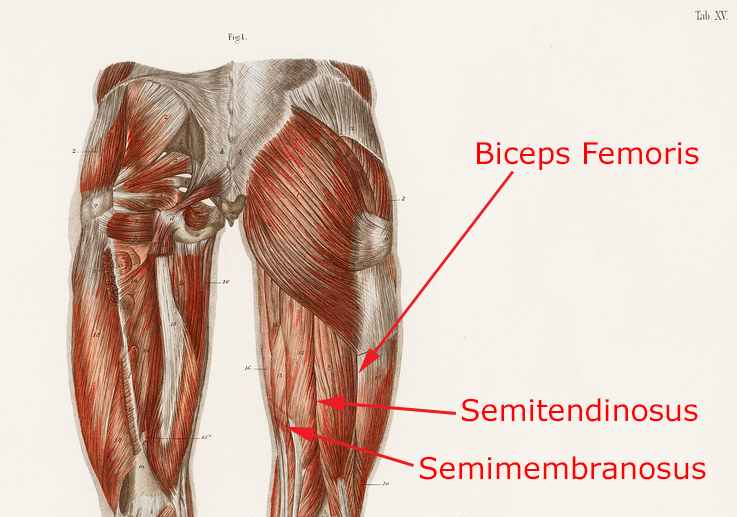Hamstring Assessment
As a self-guided first step, the goal is to identify the source of pain based on common symptoms related to Hamstring Strain. The following will direct you to more information about common causes, which will help inform your next steps in the ARC Running process: Rehabilitation and Conditioning. At any point, you are welcome to schedule a personal assessment with our PT.

Hamstring injuries mostly occur from rapid extension-contraction combos (e.g. sprinting and jumping), and can be mild to severe in intensity. Sometimes there is a “pop” in the hamstring that may indicate a tear. The biceps femoris is the most injured of the three hamstring muscles.
- Sudden minimal to severe pain in the back of the thigh.
- Popping sound with delayed bruising.
- Can be painful to touch (palpate) along the muscle or tendon.
- Pain with activation of the hamstring, such as walking up steps or actively bending the knee.
- Pain increases with stretching of the muscle.
- The hamstring muscle group is found in the back of the thigh, with a common attachment from the pelvis sit bone (ischial tuberosity), ending at each side of the knee. It is, therefore, a two-joint muscle group as it crosses the hip and knee joints.
- There are three main hamstring muscles: the semimembranosus and semitendinosus on the inside, and the biceps femoris on the outside.
- The main role of the hamstring during running is to decelerate the lower leg from going too far forward (i.e. eccentric strength).
Still Need Help?
You are welcome to meet virtually with our PT for additional feedback and assessment. Otherwise, continue to the next step to assess potential causes of your pain.